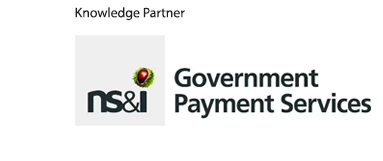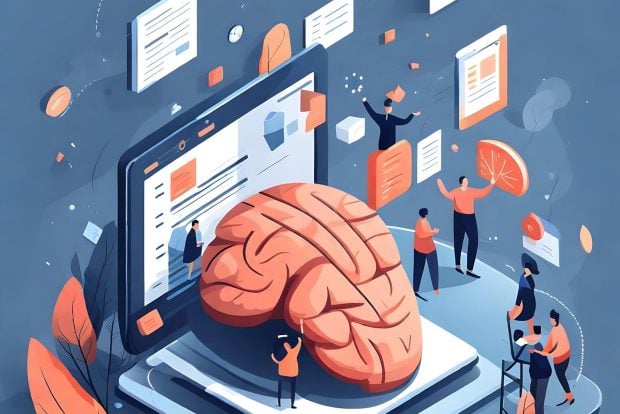Relive all the sessions from Innovation 2025

Thousands of delegates flocked to London in March to hear how government leaders from around the world are innovating to deliver high-quality services for citizens
You can watch the sessions from the conference, held on 25 and 26 March, in London, on demand on the Innovation website.
Watch the main stages on-demand for day 1 and day 2.
Roundtables at Innovation
The conference also hosted a series of roundtables on artificial intelligence, mission-led government, sustainability, and welfare payments fraud and misuse.
Below are summaries of each roundtable. These were held under the Chatham House Rule, so the contributions from public servants can be reported, but not their names, to allow attendees to speak freely.
Confidence boost: seizing the AI opportunity in government
Building sustainability in government: how to make progress
The art of the possible: rewiring the UK government to deliver its missions
How to deploy artificial intelligence in government as part of a GovTech revolution
‘Be brave, be transparent’: How governments are tackling fraud
Advancing AI in government – from upskilling to scaling
How the UK can boost innovation to meet the government’s growth mission
Confidence boost: seizing the AI opportunity in government
At this roundtable, supported by knowledge partner Thoughtworks, attendees discussed strategies for, and hurdles to, AI deployment in government
Senior civil servants from a range of UK government departments – including HM Treasury and Cabinet Office – as well as from local authorities and other public bodies, gathered at a roundtable supported by knowledge partner Thoughtworks to dicuss how to use AI in government.
Attendees at the session discussed the challenges of building and buying related technologies and approaches to testing the use of AI, to the need to strengthen public trust.
On what governments can do to design, test and deploy AI solutions with confidence, one participant unpacked the ‘scan, pilot, scale’ model set out in the governemnt’s AI Opportunities Action Plan, and explained how this approach works in practice.
They said that scanning involves researching what kind of technology or tool might be best suited to the task in hand, then piloting “something small”, using a limited team of data scientists who can build together quickly. The team or department takes stock of, and learns from, the outcome of the pilot. If the resulting product is seen to have promise, steps are taken to scale up.
Another participant said that this model had already proved useful to their team at local government level. After the successful piloting of a system in one city borough, scaling to other boroughs made sense, they said. But by contrast, systems that are piloted successfully in one department of central government are currently less likely to be picked up by other departments, even if they are transferrable. The speaker urged central government officials to look at what had worked in local government and to ‘de-silo’ and scale projects in and across their own organisations.
“I’m not saying we’ve cracked it,” they said. “There are still a patchwork of pilots going on, but [this model] allows us to quickly scale to more boroughs.”
Building and buying
Those around the table broadly agreed that most government departments will not be able to build their own AI, and that therefore buying in technological solutions was both a short-term necessity, and a circumstance that would require long-term thinking.
As one attendee pointed out, governments are going to need to anticipate changing expectations of AI-powered public services, and adapting to user needs would benefit from shared work across departments.
“If you pull the resources together across government, you probably get a better service,” a speaker said.
But as another civil servant argued, no one AI solution fits all and whether you are building or buying, an AI tool “tailored according to the job description of that particular office”, is better placed to deliver on a mission – but the challenge is that each government department often lacks the capacity to develop an AI plan to meet its own unique priorities.
When AI misbehaves
How government can mitigate AI risks, anticipate AI behaviour (or misbehaviour) and adapt at pace wsa also discussed in the session.
Part of mitigating risks is ensuring that the data used to make decisions are representative and, as one speaker said, knowing that you can prove that data’s representativeness “continuously”.
“The models are evolving all the time. If you don’t have a repeatable way of checking that it works, and automating the governance that you know is still compliant, you’re going to be in a whole world of trouble,” they said.
How to grow trust
A discussion about how governments can improve public trust in AI began with the subject of digital identity.
“Digital identity is clearly a very important aspect [as a] critical enabler to digital transformation, and it’s still quite constrained by citizens’ perception about trusting government,” said one participant.
“We’ve never really tried to have a conversation with the citizen about what this technology really is. And I would love for that to take place in the context of digital identity, but also AI.”
Another speaker pointed out that, unlike genetically modified foods, AI technology cannot be “legislated away”. AI is going play a significant role in public services one way or another. The least governments and societies can do is decide how they want those services to look, feel and function.
“We still think we need to make the most of the [AI] opportunity, rather than let it happen to us in a reactive way. We’re just not doing that,” they said.
This comes down to communication. One speaker said that for the NHS, for instance, stories about the myriad ways AI is changing citizens’ lives for the better are crucial.
“Within the public sector, we are already talking about how [AI] is changing the way we work. In our playbook, we discuss use cases and case studies. We need those kind of case studies for citizens [in the form of] storytelling.”
“If you think about medicines: a medicine does good for society and for the patients it serves, and often has side-effects,” another speaker said.
“I’d like to see a future where our AI products and services have those kinds of warnings, rather than these lazy warnings you see like: ‘These AI systems may hallucinate’. A user isn’t going to check that, so you should tell them what their risk is,” they concluded.
Written by Jack Aldane
AI for government: ensuring rigor, overcoming fear and building public confidence roundtable was supported by knowledge partner Thoughtworks.
Building sustainability in government: how to make progress
If the UK is to reach net zero, the government must also work towards making its own portfolio and operations environmentally sustainable. Those at this roundtable, supported by knowledge partner Signify, discussed how to improve the energy efficiency of Whitehall buildings
The UK government has strengthened the milestones that the country hopes to meet as it moves towards net zero. Prime minister Keir Starmer announced last year that the UK would increase its interim emissions reduction target from 78% to 81% by 2035, on the road to reaching net zero by 2050.
Reaching this target will require action across every part of society and the economy – including government. The government is developing updated sustainability strategies and action plans to make progress in areas such as digital sustainability.
As part of Innovation 2025, Global Government Forum brought together civil servants from across the UK government to discuss how departments and agencies can make progress on sustainability.
Attendees at the session discussed both the progress that has been made so far, and the plans that are needed for the future.
The government has previously set out greening government commitments for departments and their agencies – although the most recent version of these commitments expired in March 2025.
The officials present at the roundtable highlighted that updated green government plans were being developed. They noted the difficulty in improving the sustainability of government buildings, which can often be part of complex, historic estates.
One official said that their organisation’s estate dated back to 1916.
“The buildings have evolved from that, so you can imagine the kind of estate that we’ve got,” one attendee said. “Lots of really old buildings: very inefficient, lots of lighting specifically, that is way, way out of date. But the challenge of, how do you make that transition on the site?”
Areas of progress
Many attendees agreed that it was difficult to benchmark departments’ progress due to the vastly differing nature of their estates.
However, they also discussed how progress had been made in a number of areas, in particular cross-government working in developing standards in areas such as technological sustainability.
One official explained: “Working with Defra, there is a star rating index [that has been developed]. Some people have used the star rating index for departments, as well as the vendors, to show this is how your carbon footprint will be managed – you can see what is the carbon footprint and how they are reducing it.”
Focus sustainability on the ‘here and now’
Speakers also highlighted the need to focus on the changes that can be made “here and now” through improving areas like energy efficient lighting. But government is not always making the most of these opportunities.
For example, the previous Conservative government’s Green Deal did not include elements of lighting.
“Do one thing at a time with things like lighting that can bring real instant benefits, because without everybody’s effort and everybody’s time, we’re not going to get to net zero by 2050,” one attendee said.
One area where progress has been made was in the sustainability of departments’ second or third headquarters being opened around the UK.
These second HQs, as one official put it, were more technologically and environmentally advanced than traditional Whitehall buildings. “They have taken advantage of all the technological advancements in the condition of the office and kitted it out for ministers to be able to work as effectively in that place [second headquarters].”
Best practice would also mean bringing existing buildings up to baseline energy efficiency standards, they added. “If you use [technologies] that are available now, we can make it to net zero by 2050. There’s no reason why the Westminster buildings can’t be brought up to much, much higher standards.”
Other speakers pointed out that the government is starting to do just that. Great British Energy’s first project will put rooftop solar panels on 200 schools and 200 hospitals, with the aim of cutting energy bills.
“It’s not just the lighting part, but the energy which we are bringing in through renewable energy sources like solar panels or wind energy. That’s where we have to go, and probably these kind of initiatives can help achieve overall greening government targets.”
Embracing green government
One official, who described their department’s estate as crumbling, said the sustainability needs to encompass wider metrics of sustainability, in particular given the move to flexible working for many officials.
“How does our own setup impact the environment? What can we control [and] how are we supporting everybody to work in ways to become sustainable?”
Attendees also discussed the work government undertakes to understand the carbon footprint of procurement – for both vendors overall and individual technologies.
Written by Richard Johnstone
Building sustainability in government: how to make progress roundtable was supported by knowledge partner Signify
The art of the possible: rewiring the UK government to deliver its missions
In this roundtable, supported by knowledge partner Q5, participants argued that to meet the UK government’s five core missions, the civil service would need to ditch entrenched ways of working and embrace the radical
The UK government has set five missions to drive its work: kickstarting economic growth, reforming the NHS, making streets safer, breaking down barriers to opportunity, and making Britain a clean energy superpower.
Prime minister Sir Keir Starmer acknowledged that achieving these objectives would “require nothing less than the complete rewiring of the British state”.
This roundtable brought together UK civil servants to discuss the skills, structures and systems needed to foster greater innovation and collaboration – and achieve the rewiring needed to deliver the government’s missions.
Revealing a range of perspectives on how best to navigate the complexities of systemic change, roundtable participants explored the barriers to effective mission delivery, including bureaucratic inertia, unclear priorities, and the challenge of balancing ambition with practical execution.
Collective ‘optimism bias’ – and overcoming fear of failure
Attendees agreed that the rewiring of government systems is often costly and time-consuming, and is typically only undertaken when existing structures become dangerous or ineffective.
One participant noted that one of the barriers is a tendency for civil servants to have “collective optimism bias about what we’re dealing with” and either underestimate the need for reform or misjudge what is required to achieve it. A common misconception, they said, is that missions can be achieved simply by allocating funds.
At the same time, they added, “we have lost, as a as a civil service, our ability to design institutions and structures to actually enable these things to happen”.
The roundtable discussed how onstitutional caution and risk aversion hinder innovation and experimentation. One attendee’s experience was that while “we are being pushed by ministers to be more radical,” entrenched ways of working mean proposed changes in government are more like tweaks. “[We’re] really having to push them to be more creative and go further,” they said.
Extracting ‘clarity from fogginess’
Beyond ingrained caution, there are also questions over culture and communication. Some participants noted that the missions require coherence and coordination, but some government departments are lacking the clear signals needed to guide their next steps. This would need to change quickly if progress was to be made, they said – and it would come down to effective leadership.
“I think there’s a tension between a desire for clarity, and the foggy messiness of what mission delivery is going to look like. And leadership is the way to extract clarity from fogginess,” as one participant put it.
On the collaboration needed to drive mission-delivery, one official said officials know how to connect with each other when it’s critical to delivery, but added government can “do best [when we] connect at the strategic ideation stage.”
Lessons from COVID
The conversation also discussed how the COVID-19 pandemic had provided a unique test case for government effectiveness, demonstrating the ability to coordinate and innovate, and to deliver, at unprecedented speed. Those at the roundtable discussed that although much of what was achieved in government at that time was impressive, one of those around the table warned that a ‘COVID mindset’ should not become the norm. “I don’t think a COVID mindset is what we want. A lot of it was flawed policymaking. If I look at some of our error and fraud stats on COVID, were there holes in that legislation? Absolutely. And that is not what we want to be driving towards.”
Others believed COVID highlighted the importance of getting the risk appetite right, In vaccine development, for example, there were lessons in embracing uncertainty and prioritising structured decision-making.
As one said: “I do wonder whether there are some quite useful lessons. I’m not saying it’s all perfect but actually looking at things around prioritisation, risk and empowerment in practice, I think they’re good case studies that we can use that were ‘tested in anger’, so to speak.”
Shifting priorities to focus on execution
Panellists agreed that missions are inherently complex, and some argued that to drive meaningful change, the government should incentivise the private sector, create better market conditions, and reduce centralised control, distributing decision-making to local governments and external entities.
Some also suggested a ‘system-of-systems’ approach – where resources and capabilities from a collection of dedicated or task-oriented systems are pooled to provide more functionality and performance than the sum of the constituent parts – instead of focusing too heavily on the simplification of five standalone goals.
“If we try and boil this down: there are five missions, that’s it. The question we should be asking is, ‘what are you doing to deliver the missions, or what are you doing to help’?”
Written by Paige Bernier
The ‘Equipping our people for mission-led government: how skills, structures and systems can foster greater innovation and collaboration’ roundtable was supported by knowledge partner Q5.
How to deploy artificial intelligence in government as part of a GovTech revolution
This roundtable session, supported by Capgemini, examined how AI can be implemented as part of a revolution in government technology
Artificial intelligence is set to revolutionise society – and governments with it. Governments around the world are looking at how to embed the technology in their work, both in rewiring civil service processes and to drive more responsive public services.
Roundtable attendees discussed both the success factors behind artificial intelligence deployment in government – and the barriers to doing so.
As one attendee flagged, government can struggle to scale innovative approaches to using technology in government.
“I would say we are definitely not innovative, but sit next door to people who are extremely innovative. We don’t seem to be able to pick up that innovation and carry it through.”
The problem of innovation happening in pockets, but not being embedded, and the challenge of scaling best practice was frequently touched on in the session.
It is something that has been recognised by the UK government, which has set out a ‘Scan > Pilot > Scale’ approach in its AI Opportunities Action Plan to drive adaptation.
Attendees said they are working to use examples of small-scale transformation projects as a way to help bring what one speaker called the “full suite of digital technology” to bear on large-scale problems.
One participant highlighted that where AI has worked well in their experience so far is in helping to solve a straightforward problem. “It’s one user with the pain point, and you work through the pain with them with AI. But all the juicy opportunities will require more long-term risky delivery, and that’s different skillset,” they said.
Another speaker said that a bottom-up approach of sharing best practice in both AI and GovTech more broadly, was “very much a hearts and minds winner”. It helped to get people on board with the power of AI and technology, but they agreed with others that the “big challenge is top down”.
They added: “I’ve got legacy systems coming out my ears. It’s the transformation of those legacy systems that is the opportunity, as far as I’m concerned – getting in the new product and bringing the AI underpinnings with it. I’m not actually going out to look for an AI tool separately, I want my core systems to be delivering it for me.”
Changing human roles – and risk appetites
How to place AI in the wider transformation work of government was also discussed in the session, with one participant calling for a new operating model in government.
This catalysed a wider conversation on how to engage staff in the work of changing government.
“We absolutely have to remove roles, human roles, out of our organisation – but not the human being,” one person commented. Another said that every profession in government would need to be rethought in the age of AI. “Everyone’s going to be impacted.”
Risk appetites were also discussed with one attendee highlighting what Cat Little, the chief operating officer for the UK civil service and permanent secretary to the Cabinet Office, said in her keynote speech at Innovation 2025 about the need for a “risk-smart” culture.
“We can all acknowledge it until it comes down to something we’re personally responsible for, and then [people say] ‘oh, dear’ – even though it’s a microscopic additional risk. We have this instinctive resistance. We’ve got to overcome this in ourselves.”
Another speaker said that for an organisation the vital thing was to be able to say ‘no’ quickly to pilot projects, to understand risk and effectively allocate resources to the ones that can drive change.
“The right question to ask is actually, ‘How many times did you say no?’ It sounds very cliche, but he important part is: what’s the speed at which you can say that no? That means that you’re not investing time in opportunities that actually don’t have a path to value. And value is really what the focus is.”
Written by Richard Johnstone
The ‘How to deploy artificial intelligence in government as part of a GovTech revolution’ roundtable was supported by knowledge partner Capgemini.
‘Be brave, be transparent’: How governments are tackling fraud
Fraud and error costs governments and taxpayers billions of dollars a year. At this roundtable, supported by knowledge partner Visa, public and private sector experts discussed how to tackle welfare payments fraud and misuse – from using digital IDs and citizen wallets to digital disbursement capabilities
The discussion focused on improving disbursement systems to tackle fraud and error and improve user experience. This is a priority for many administrations around the world, with the UK government estimating that fraud and error in the welfare system costs almost £10bn (US$13.2bn) a year and chancellor Rachel Reeves setting the target of saving £4.3bn (US$5.7bn) by the end of the decade.
Participants discussed trends such as the role of digital identity verification and citizen wallets to increase accuracy and improve user convenience, and the implementation of centralised digital identity systems to dramatically reduce fraud. They also discussed how these systems can be valuable for helping individuals without traditional identity documents to access support.
Key success factors identified in deploying digital ID systems were legal provisions to allow scale across departments and earning public trust through transparency and strong data protection. Biometric data can also help to prevent impersonation.
“You’ve got to be brave and you’ve got to do the right thing, and you’ve got to be very transparent,” one delegate said.

Linking credentials to services
Participants emphasised the potential of linking digital credentials to accessing specific government or private sector services, rather than framing them as part of a broader national ID system, which some are wary of. They stressed that the goal should be to ensure services are delivered effectively without creating unnecessary burdens on users: “It needs to be proportionate,” one summed up.
Some attendees observed that citizens are more willing to share their data with the government if they receive a useful outcome in return, such as better services or support through life events like employment changes.
Broader benefits
While welfare disbursements can act as a key use case for a unified digital credential, such a system could have wider benefits such as in health services or in streamlining employment processes to help people get into work more quickly.
Several participants highlighted the importance of data standardisation and harmonisation in building trust as the system expands. As trust grows and more people see the benefits, they said, it would be possible to use the data in more targeted ways, providing bespoke services rather than just universal welfare. This approach can lead to more efficient, cost-effective and impactful outcomes, they added.
Building a trusted identity
Some governments use prepaid cards to support residents who don’t have identification, such as asylum seekers. Funds are loaded directly onto the card by local authorities, for example. These cards can be restricted on how and where funds can be spent, such as preventing gambling or alcohol purchases. Over time, additional functionality can be opened up, such as when someone becomes eligible to work.
This linked to the wider discussion about the need for a pragmatic, risk-based approach to identity. Instead of requiring full proof of identity upfront, systems can accept what information a person does have and build a trusted identity from there. Biometrics, such as facial recognition, fingerprints, and iris scans, were highlighted as a tool in this process, offering a more secure foundation even when traditional documents are missing. The key takeaway was to focus on building enough trust to allow access, rather than holding out for perfect proof.
“I think one of the difficulties with identity has been that the starting point is quite a high barrier – ‘Have this document, do X, Y and Z’ – whereas actually you can build that over time using different data points,” one delegate said.
Data sharing
Delegates also emphasised the need for data-sharing. Some governments have legislation that enables data-sharing for identity purposes but others find that it’s currently “quite difficult for departments to trust one another” and often the data is years old and not regularly updated. Participants had some differing views on how to open up data-sharing.
One suggested a bold vision for government where all data would be considered government property and shared by default, with non-sharing seen as non-compliance. They argued that current restrictions create unnecessary bureaucracy and inefficiencies and that conventional user research often “lacks imagination”, prompting people to ask for incremental improvements rather than envision transformative solutions. Instead, they advocated a visionary approach where all services are connected seamlessly in a “zero-friction” Amazon-style user experience.
While some supported this, others believed a more important shift would be towards wallets where the user controls their own data as an individual and decides who can use it, how and for what purpose. This, one said, could allow governments to lead on trusted, consent-based data sharing.
“It removes all of the data protection and all of the privacy issues, because it’s my data,” one said. “I’m making that decision, not a government department.”
Delegates noted, too, how real-time data sharing, such as for earnings, helps improve the accuracy of benefits and real-time adjustments as circumstances change.
The speaker put forward a vision where life events (e.g. having a child) automatically trigger relevant government support – such as child-based benefit or maternity grants – without the person needing to apply manually. This supported the broader theme of simplifying and automating public services through better data integration.
Staying ahead
There was also a discussion of the potential for more collaboration between the public and private sectors on building trusted digital identity systems as both sectors hold complementary data and emerging global standards enable secure sharing of credentials through digital wallets and trust frameworks.
A final takeaway was that as well as implementing technology, governments also need to look at the simplification of rules as this makes it easier to automate processes and administer disbursements.
Delegates also noted the need to address not only today’s challenges but to continue to look ahead and innovate, noting that whatever protections are put in place, fraudsters will find “ever more inventive means of circumventing them”.
Written by Sarah Wray
The ‘Tackling welfare payments fraud and misuse – from digital IDs and citizen wallets to digital disbursement capabilities’ roundtable was supported by knowledge partner Visa.
Advancing AI in government – from upskilling to scaling
Governments have much to consider when adopting and implementing artificial intelligence. At this roundtable, supported by knowledge partner Ten10, participants discussed the issues – from good governance to the risk of ‘de-skilling’
Artificial intelligence represents a significant opportunity for governments to enhance public service delivery by enabling more efficient processes and informed decision-making. However, as AI adoption accelerates, addressing key challenges around human oversight, cross-departmental collaboration and the skills required to implement and govern AI effectively is critical.
Delegates at this roundtable debated balancing innovation with risk and how to prepare for scaling AI.
It was clear from the discussion that there was interest from government organisations in AI applications like document processing and summarisation, meeting note generation, contract redaction and statement of work generation, and customer service. Participants also noted the potential to use AI in policy work.
Generative AI and large language models (LLMs) were of particular interest, bringing in new opportunities as well as challenges related to skills, governance and more.
As one participant commented: “When we talk about AI, we generally have just considered it as another form of advanced analytics. LLMs have kind of reset the bar on that.”
Skills for scale
One of the most significant challenges discussed was the skills gap and cultural adaptation required for AI integration. Participants recognised that traditional recruitment approaches are no longer sufficient. Instead, there is a growing emphasis on developing soft skills, demystifying AI technologies, and creating environments where employees feel empowered rather than threatened by technological change.
Implementation strategies were also a key topic of conversation. The consensus was clear: start small, test carefully and scale gradually. Participants advocated the use of controlled pilots, hands-on workshops, and an approach that integrates AI into existing governance mechanisms rather than creating entirely new frameworks.
As one said: “Our belief is that just providing guidance probably isn’t going to be enough to get people using generative AI tools in particular. So we’re looking at ways that we can use things like workshops to help teams identify specific use cases in their business areas and then work through what kinds of tools are actually best for those use cases, what kinds of governance and management strategies are going to be necessary.”
Another said: “We’re trying to ensure that people understand effectively what this technology is all about. Try to demystify it, how it works, and what is it actually doing when you send it a prompt.”
Retaining critical thinking
While skills are key to AI adoption and management, the roundtable also highlighted a critical concern: the potential for AI to erode skills like critical thinking if not carefully managed.
As one participant said: “I think there’s an upskilling conversation, but also a de-skilling conversation. I think you can easily imagine a civil service inadvertently de-skilling itself in quite key areas, like critical thinking, policy development, things like that, very, very quickly.”
Those around the table also stressed the importance of developing clear guidelines for responsible AI use, implementing robust audit systems, and addressing potential biases.
While some discussed guidelines and policies around AI, others advocated regulation such as in areas that could be considered automated decision-making.
Written by Sarah Wray
The ‘Advancing AI in central government – oversight, collaboration, and skill-building’ roundtable, was supported by knowledge partner Ten10.
How the UK can boost innovation to meet the government’s growth mission
Civil servants at this roundtable, supported by PA Consulting, discussed how the UK government can meet its mission to kickstart economic growth by unlocking innovation potential
Kickstarting economic growth is the UK government’s number one priority. Ministers have set the mission of raising living standards in every part of the United Kingdom and generating increased revenue for public services.
This roundtable conversation examined a number of themes on how the govenrment can better harness the economic benefits of innovations – from how to diffuse innovations across government, what the barriers are to making the most of new ideas, the enablers of innovation in government, and the practical lessons from where innovation and collaboration has worked.
At the outset, knowledge partner PA Consulting set out the findings from its research on what works in helping drive innovation, including inspiration and support to try new ideas, missions to help focus transformation efforts, and engaging with a broad range of stakeholders.

Maximising the impact of good ideas
The session focused on how government can make use of innovations at every step as they look to meet the government’s priorities.
Attendees said that the UK excels in generating innovative ideas, but the focus needs to be placed on maximising the impact. This can be difficult, and organisational leadership and culture play a significant role in driving success.
One attendee highlighted the challenge. “What we really want is to change the culture of the organisation so that everybody feels like it’s their thing to own – [and] I think the other challenge is, how do you get people to pull in the same direction?”
Indeed, reflections from the participants highlighted interest in innovation throughout, but noted challenges in execution, particularly in government departments where there are many competing priorities.
Even organisations that claim to “live and breathe innovation” are not always adept at implementing or optimising innovative practices, one speaker said. Others present said that as well as cultural change, there was a need for actionable strategies and effective leadership to translate innovation aspirations into tangible, impactful outcomes.
“Sometimes people think ‘if it doesn’t give us a solution at the end, then it’s not innovation’, [but] what fails is really, really interesting – in fact sometimes more interesting than anything else.
“I think you do need to fail fast, because you can’t waste money. But there’s a difference between failure [and] a project teaching you stuff, and a project just being run inefficiently.”
Many attendees agreed with this point, but, as one speaker said, it is “really hard to do in the civil service” without leadership support.
They added: “It’s hard to spend money that you can’t demonstrate the value for.”
How COVID helped make government more innovative
Participants also highlighted that the coronavirus pandemic had served as a catalyst, with one stating that certain programmes were “by nature, pushed for innovation”.
“I would say within those programmes, we were excellent at trying new things,” they said, although they noted that at the time “money was coming in freely” as they were working on a national priority.
“All of these things did help us improve and innovate… [and] that has diffused throughout the whole organisation.”
Another speaker agreed that the pandemic had helped drive transformation in their organisation. “During COVID, there were so many things we bootstrapped because we had to go back to this crisis point, and that was actually the fundamental underpinning of some of the changes we made to improve.”
Sharing practical tips
Attendees also discussed some more prosaic tools. One highlighted the use of collaborative lists as a departmental “suggestion box” to crowdsource new approaches, as well as work to stream processes, improve communication, and automate project dashboards.
There were also comments from participants about the need for a shared understanding of what innovation means across government and a common language to making it happen.
One speaker concluded: “There’s an integrity to our approach in crises [such as COVID] which I think beats the world. The UK a few years ago was really up there in terms of innovation leadership, and we perhaps have fallen back a little. But… through communities like this, there’s such hope to really get us back up to where we should be.”
Written by Paige Bernier
The ‘How the UK can realise the benefits of innovation’ roundtable was supported by knowledge partner PA Consulting.
Innovation session summaries
Global Government Forum used an artificial intelligence tool to analyse all the sessions at Innovation 2025 for takeaways relating to public and civil service management and workforce issues, artificial intelligence, digital and data, and sustainability. Read the summaries here:
- Management and workforce takeaways from Innovation 2025
- Artificial intelligence takeaways from Innovation 2025
- Digital and data takeaways from Innovation 2025
- Sustainability takeaways from Innovation 2025
Innovation 2026 will take place on 24 & 25 March 2026 at Excel, London. You can register to attend here




















